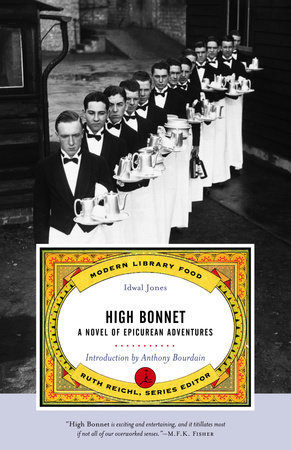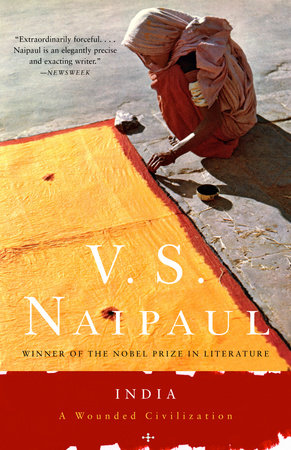Author Q&A
Q: You’re a culinary historian. Of all the interesting food staples, why did you choose to write about milk?
A: To me, it’s the most magical shape-shifter of all ingredients. And something that takes us back before the dawn of history. People thousands of years ago could have told us that one batch of milk holds in itself the makings of cream, skim milk, yogurt, sour cream, butter, buttermilk, panir, all kinds of fresh cheeses, and much else. Even leaving out the whole realm of ripened or aged cheeses, milk as it comes from the world’s milch animals (cows, camels, goats, sheep, mares, and more) has always been a treasure-house of culinary possibilities that no one would guess from the surface.
Q: You call milk the “First Food.” Can you explain this?
A: It’s the first thing any newborn mammal tastes and takes pleasure in after emerging from the womb and starting to breathe on its own. Of course, we’re the only mammal that has ever experimented with the milk of other species.
Q: It seems many children get calcium/dairy from products like Go-Gurt (yogurt in a tube) or strawberry-flavored milk. What dairy products should parents introduce their children to and do you have any suggestions on how to make milk more palatable to children?
A: That children (or adults) positively need dairy products is a myth. Sure, they’re good sources of protein and calcium, but so are many other foods. In my opinion, trying to pour milk into kids by the quart is one of the big nutritional mistakes of modern times. If they dislike plain milk, buttermilk, unflavored yogurt, and so forth, don’t worry and don’t push it. And don’t get them started on sweetened junk versions of dairy products. When they’re a little older, either they’ll like the taste of plain, real milk and fresh milk products in their own right or they won’t. (By the way, some children who scorn milk in other forms really like cheese.)
Q: Can people who are lactose-intolerant cook from this book?
A: Yes! There are degrees of lactose intolerance. Most people can tolerate at least small amounts. Anyone with a very severe case needs to follow a doctor’s advice, but others should explore the recipes using milk products cultured with lactic-acid bacteria that remove most of the lactose — yogurt, cultured buttermilk, fresh cheeses drained of whey. In fact, most of the world’s dairying peoples have always consumed milk in those forms instead of drinking it fresh.
Q: How different is the milk we buy at grocery stores and supermarkets from milk straight from the cow?
A: The difference is like night and day. If you could follow most commercial milk on its journey from farm to store dairy case, you would see it at the processing plant being pumped from tanker trucks into giant silos. From there it enters a huge continuous-feed system where — among a barrage of other processes — the original whole milk is taken apart via centrifuge; the separated cream and skim milk are recombined not to the proportions of true whole milk but by arbitrary percentages; the mixture is pasteurized at (usually) 161 degrees Fahrenheit for 15 seconds and pumped through the tiny apertures of a homogenizer to smash the butterfat globules into smithereens too small to collect in a cream layer; and the pasteurized homogenized milk is filled into immediately sealed cartons and dispatched for delivery to retail stores.
It may reach your refrigerator as long as a week after milking. It doesn’t even begin to suggest the beautiful, indescribable freshness and creaminess of good new milk — chiefly destroyed by homogenization and the long interval between milking and consumption.
Q: Is that a consumer’s only choice?
A: Not now that small-scale dairies are springing up in many parts of the country. Unlike the big outfits, they can use older and simpler processing methods that don’t alter the milk as drastically. For instance, pasteurizing for a longer time at a lower temperature, and omitting the distorting step of homogenization. (Unhomogenized milk is often sold as “creamline.”) The milk is distributed locally, not over huge distances, and arrives at retail venues much fresher. Look for it at farmers’ markets and a growing range of specialty food shops, even a few supermarket chains.
Q: Why do you think there has been a resurgence of interest in local and small-scale dairy products?
A: Same reasons as the rest of the ongoing renaissance in small-scale local farming. More and more consumers understand the difference in quality between factory-scale and — well, human-scale food production.
Q: You grew up in a corner of southeastern Pennsylvania where small dairy farms were once common. How did this contribute to your work on MILK?
A: I wasn’t particularly curious about milk until I was curious about food in general — and by that time, those farms were vanishing fast. What’s really stuck in my memory over the years is the sights and sounds of cows going about cow business — lots of different breeds, in those days. (The area is almost completely suburbanized now, and the few farms that are left have all Holstein-Friesians, those big black-and-white cows.) I remember cow noises coming from the Guernsey herd on the other side of our field, where the golf course is now. Cows grazing in little meadows next to little creeks. Cows settling down under willow trees to chew the cud on a hot day. The smell of the manure that all our farmer neighbors spread over the fields at spring planting. Late in the afternoon, a dozen assorted-breed cows traipsing in file back to the barn for milking. Though I don’t dwell on my own memories in the book, those animals as part of that landscape represented something valuable — valuable to all of us — that’s almost been lost.
Q: Is there anything that you regret leaving out of MILK?
A: It may sound like same-old same-old, but I wish I’d mentioned the frightening loss of genetic diversity among dairy cattle. Artificial insemination, coupled with insane emphasis on higher and higher yields per cow, means enormous demand for semen from a comparative handful of sires. So most American dairy farmers are working with Holstein-Friesian cows that are tremendously inbred — which reinforces known liabilities of the breed, such as difficulty taking in enough food energy to keep up with the huge volumes of milk the “best” cows secrete.
Q: How do you predict Americans’ relationship with dairy products will evolve over the next 25
years?
A: I’d expect both better and worse. My pessimist self predicts that (a) the already difficult economic pressures of mainstream commercial dairying will worsen, leading to ever more extreme efforts to wring the last possible drop of tasteless milk out of overstressed cows; (b) if you think strawberry yogurt candy and pre-flavored probiotic milk drinks are niche-marketing gimmickry gone crazy, you ain’t seen nothing yet.
The optimist in me knows that small artisanal dairies with well cared-for animals are not a flash in the pan. Goats’ milk, sheep’s milk, milk from different cow breeds and maybe even water buffaloes are going to become better known to people who care about food. Simple products like cultured buttermilk and cottage cheese are going to appear in versions a hundred times better than the usual supermarket selection. The catch is that they won’t be cheap.
Q: What has been your biggest discovery in working on MILK?
A: Realizing that for most of the world’s peoples who have kept herd animals, milk and fresh dairy products have always been the absolute opposite of bland and boring. Cooks from the eastern Mediterranean, the Middle East, the Caucasus, and the Indian subcontinent just about wrote the book on milk-based cuisines, long before dairying got to western Europe. There’s a whole universe of strong, vivid, exciting flavors out there that will be completely new to people brought up in narrowly Western dairy-food traditions.
Q: MILK includes recipes as diverse as Southern Buttermilk Pie, Chinese “Fried Milk,“ Liptauer
Cheese, and Mango Lassi, to name a few. What’s your favorite recipe in the book?
A: A zucchini salad with yogurt dressing — you saute grated zucchini with a lot of scallions, toss with yogurt, and serve garnished with plenty of fresh dill.
Q: Last question: what’s your favorite milk product?
A: Yogurt — plain, creamy, and very fresh.
























